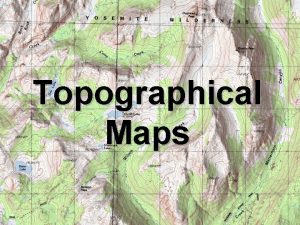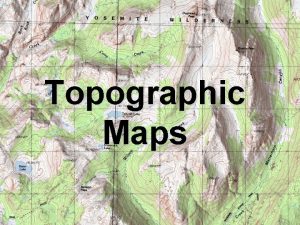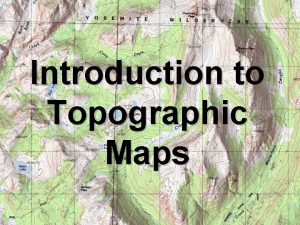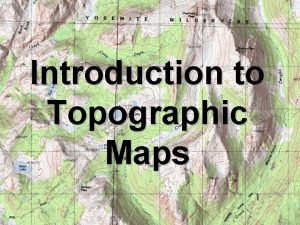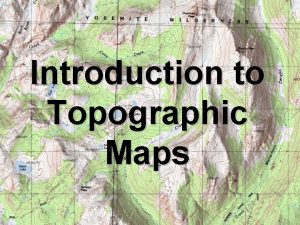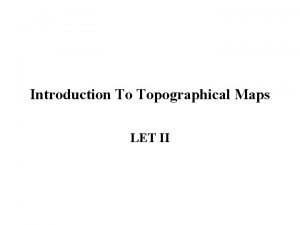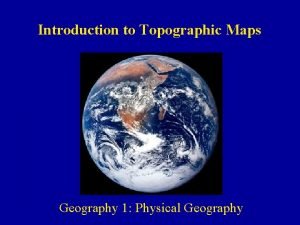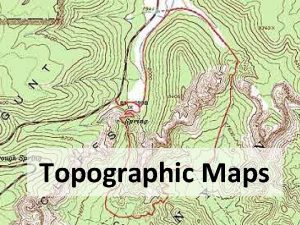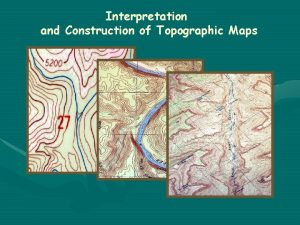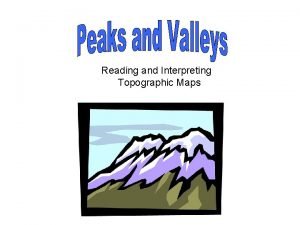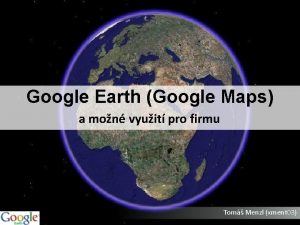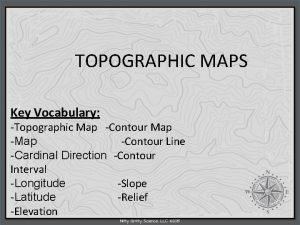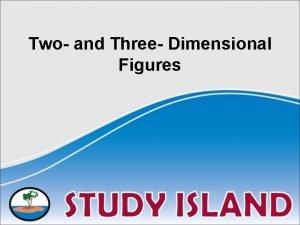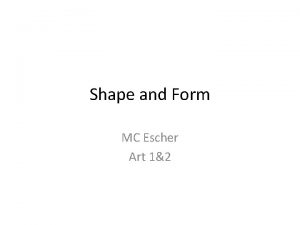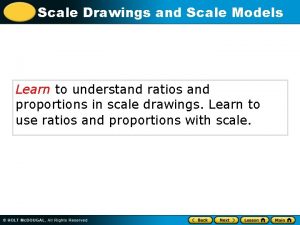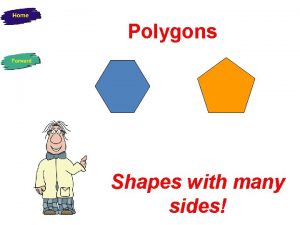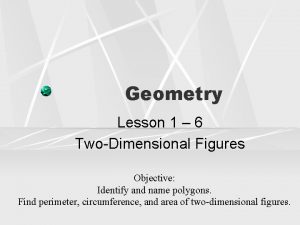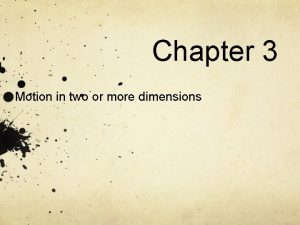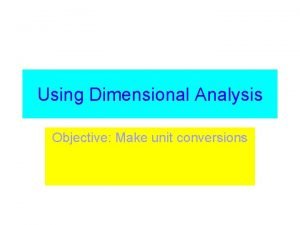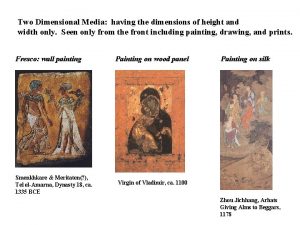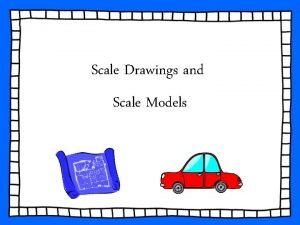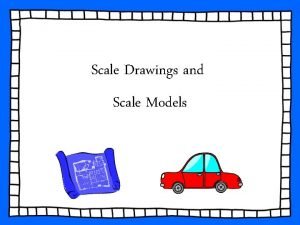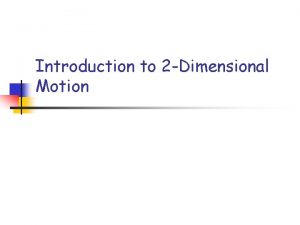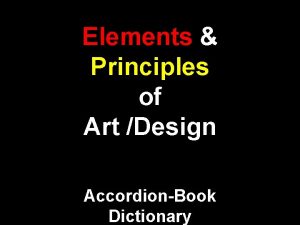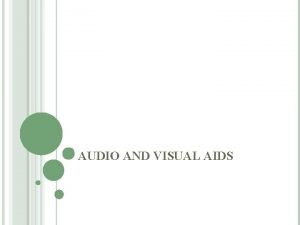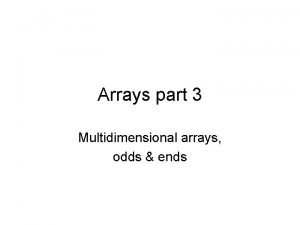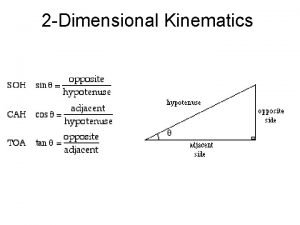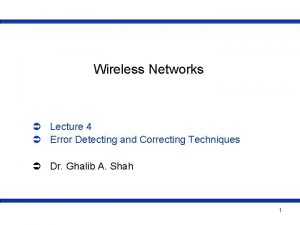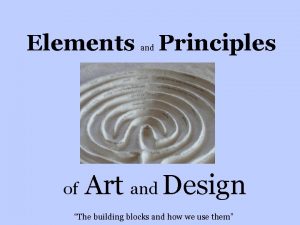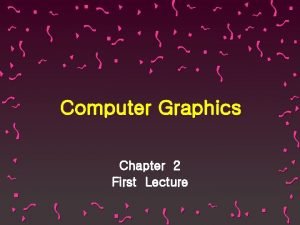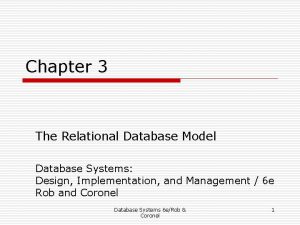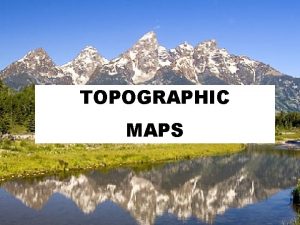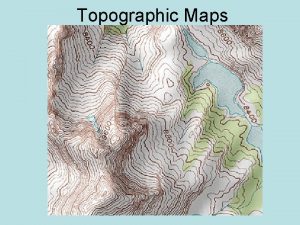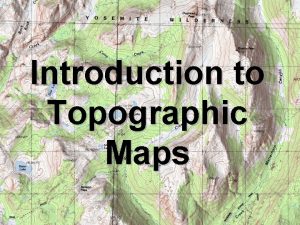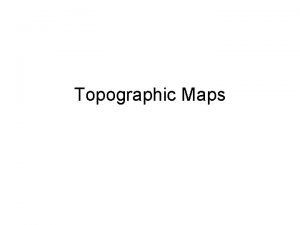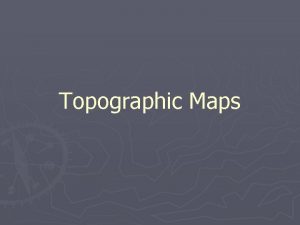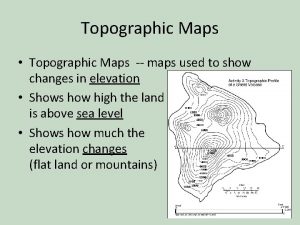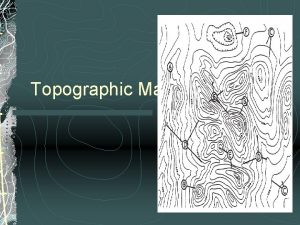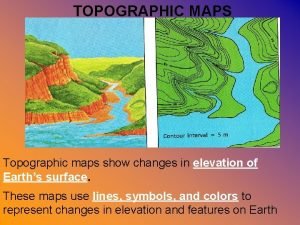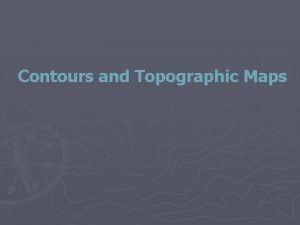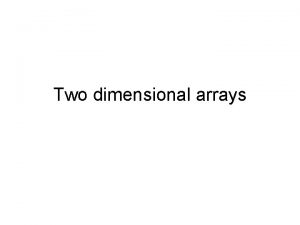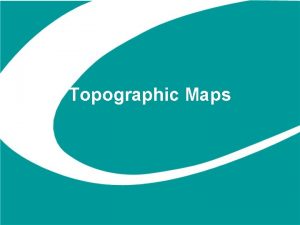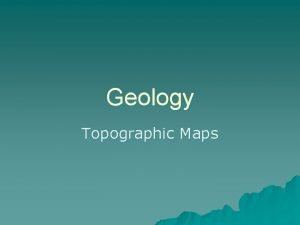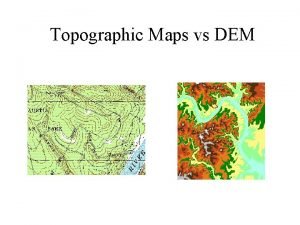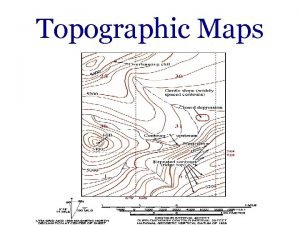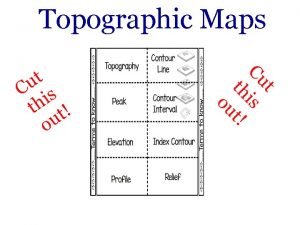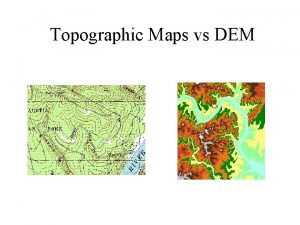Introduction to Topographic Maps Topographic Maps Two dimensional








































- Slides: 40

Introduction to Topographic Maps

Topographic Maps • Two dimensional model of the Earth’s surface (represents 3 -D world) • Topographic maps are also known as contour maps. • Show elevation above sea level using contour lines.




“Real World” Contour Map

Topographic Maps • Contour Line – Line - line on a map that connects points of EQUAL elevation. - show elevation and shape of the land • Relief – Difference between high and low elevations


Topographic Maps • Contour Interval – Interval difference in elevation between each line. MUST be equal spacing. Contour interval = 20 feet 580 560 540 520

Topographic Maps • Index Contour – Usually every 5 th line is printed darker and has an elevation printed on it.


Rules for Contours 1. Contour lines never cross

Rules for Contours 2. Contours form closed loops (even if not shown of the map.

Rules for Contours 3. Contours bend upstream (uphill) when crossing a stream.


Tracking Flowing Water • How does water always flow? DOWNHILL • How can we tell what direction (N, S, NW, ESE) is downhill? PSC 121 Prince George's Community

Tracking Flowing Water You can look for elevation changes since water will flow from higher to lower elevations. Here the stream flows toward the northwest. 2000 ft 2100 PSC 121 Prince George's Community ft

Tracking Flowing Water You can look at the contour lines as they cross the stream. They will always point upstream. Downstream PSC 121 Prince George's Community Upstream

Rules for Contours 4. The maximum possible elevation for a hill is “ 1” less than what the next contour “should” be. The highest possible elevation of the hill is just below the value of the next line that is not shown 90 80 70 60 50

399 179 239

Closely Spaced Contours • Steeper Slope (Gradient) – contour lines are closer together.


Wide Spaced Contours • Gradual/Gentle Slope (Gradient) – contour lines are farther apart.


A B

Steep or flat? You can tell whether a region on a map is steep terrain (hill/mountain) or relatively flat (plain) by looking at contour lines. HOW? We need to calculate a terrain gradient. This is the change in elevation over the change in distance along the ground. PSC 121 Prince George's Community

Steep or flat? Elevation change 0. 5 mile distance Elevation change 2170 -2150 = 20 feet 1380 -780 = 600 feet Gradient 20 ft/0. 5 mi = 40 ft/mi Gradient 600 ft/0. 5 mi = 1200 ft/mi Flat Steep PSC 121 Prince George's Community

Contours and Profiles http: //reynolds. asu. edu/topo_gallery/images/hillmap. gif You can generate a profile of a landform from the contour lines on a topographic map. Click on image to see contours develop PSC 121 Prince Simple contour George's Community map

Depressions • Contour lines which show a depression, crater, or sinkhole on a map. • Shown by dashed lines (hachure marks) on the inside of a contour line • The elevation of the first depression contour is the same as the lowest regular contour near it.

Rules for Contours The lowest possible elevation for a depression is “ 1” more than what the next contour “should” be. The lowest possible elevation of a depression is just above the value of the next line that is not shown 90 90 80 51 70 60 50

100 50

Benchmarks • a location whose exact elevation is known and is noted on a brass or aluminum plate. • bench marks are shown on maps by an X with the letters BM written next to them.


Map Scales • Indicates the distance on the map compared to distance in the real world • Graphical - by a line divided into equal parts and marked in units of length.

Map Scales • Numerically – usually by writing a fraction to show what part of the true distances map distances really are. • 1: 63, 360 • One inch on the map equals 63, 360 Inches in the real world. (There are 63, 360 inches in a mile)

Gradient • A trail is four miles long as measured by the scale on a map. The beginning of the trail is at the 1, 060 ft contour line and the end of the trail is at the 960 ft contour line. Calculate the gradient of the trail. Gradient = 1060 ft – 960 ft 4 miles = 25. 0 ft/mi

Contour Lines Elevation is indicated by contour lines. A contour line is a line of equal elevations. All points on a contour line have the same elevation. http: //raider. muc. edu/~mcnaugma/Topographic%20 Maps/contour. htm PSC 121 Prince George's Community 800 feet 700 feet

Contour Lines The elevation difference from one line to another is called the contour interval. On the map portion below the contour interval is 20 ft elevation increase PSC 121 Prince George's Community http: //raider. muc. edu/~mcnaugma/Topographic%20 Maps/contour. htm 20 ft elevation decrease

Contour Lines The contour interval is usually printed on a topographic map. However, you can always calculate the interval from the lines with values. PSC 121 Prince George's Community

Review Questions • How are contour lines drawn on maps? • How does a contour map show whether a slope is gentle or steep? • What is a benchmark? • How is a benchmark shown on a map? • How is distance measured on a contour map?
 A topographic map is a two dimensional model
A topographic map is a two dimensional model A topographic map is a two dimensional model
A topographic map is a two dimensional model A topographic map is a two dimensional model
A topographic map is a two dimensional model A topographic map is a two dimensional model
A topographic map is a two dimensional model Introduction to topographic maps
Introduction to topographic maps Circular motion is one dimensional or two dimensional
Circular motion is one dimensional or two dimensional Let ii
Let ii Physical and cultural features of topographic map
Physical and cultural features of topographic map Drawing contour lines worksheet
Drawing contour lines worksheet On a planimetric map the tells you the number
On a planimetric map the tells you the number Vertical interval of a map
Vertical interval of a map Topographic maps show
Topographic maps show Topographic maps vocabulary
Topographic maps vocabulary Topographic maps
Topographic maps Independent practice: topographic maps
Independent practice: topographic maps Maps google maps reittihaku autolla
Maps google maps reittihaku autolla Two dimensional motion examples
Two dimensional motion examples What are two and three dimensional shapes
What are two and three dimensional shapes Escher art
Escher art Scale drawings and models
Scale drawings and models 6 equal sides
6 equal sides 1-6 two dimensional figures
1-6 two dimensional figures Two dimensional motion
Two dimensional motion Eysenck’s two-dimensional scheme
Eysenck’s two-dimensional scheme Contoh program matriks array 2 dimensi python
Contoh program matriks array 2 dimensi python What are two dimensional analysis of objectives
What are two dimensional analysis of objectives Two-dimensional media
Two-dimensional media Kelly enlarged the area of a photograph to 250
Kelly enlarged the area of a photograph to 250 Parts of a scale
Parts of a scale Two dimensional motion definition
Two dimensional motion definition Wrench statics
Wrench statics Two dimensional decorative visual repetition
Two dimensional decorative visual repetition Pizza would be considered a 2-dimensional visual aid
Pizza would be considered a 2-dimensional visual aid Haskell two dimensional array
Haskell two dimensional array Salmon often jump waterfalls to reach
Salmon often jump waterfalls to reach Wifi error correction
Wifi error correction Two dimensional vision
Two dimensional vision Principle and elements of arts
Principle and elements of arts Two dimensional graphics
Two dimensional graphics Packet frame segment
Packet frame segment Two-dimensional structure composed of rows and columns
Two-dimensional structure composed of rows and columns
